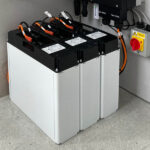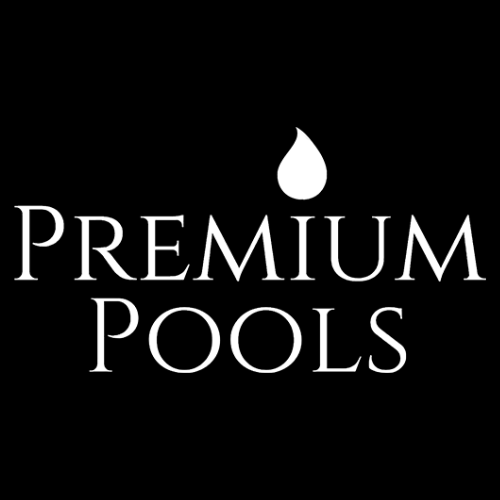Whether you’re planning to renovate an aging swimming pool or simply want to give your backyard a refreshed, luxurious look, choosing the right pool resurfacing option is one of the most important decisions you’ll make. The finish you select will not only impact the appearance of your pool but also determine its durability, comfort, maintenance needs, and overall cost.
In this complete guide, we’ll break down the three most popular pool resurfacing materials—plaster, pebble, and quartz—to help you choose the best finish for your pool.
Why Resurfacing Matters
Before diving into the material options, it’s important to understand why pool resurfacing is a necessary part of pool ownership. Over time, even the best-built pools develop surface issues such as:
-
Staining and discoloration
-
Cracks or pitting
-
Rough, abrasive textures
-
Leaks or water loss
-
Mold or algae buildup
These problems not only impact aesthetics but can also affect swimmer comfort, safety, and long-term structural integrity. Resurfacing corrects these issues while providing a brand-new finish that can last anywhere from 8 to 20+ years, depending on the material.
To make the most of your investment, it’s essential to select the right surface for your needs, climate, and budget.
Option 1: Traditional White Plaster
Plaster is the most widely used and cost-effective pool finish. Made from a mix of white cement, limestone, and water, plaster creates a smooth, clean-looking surface that gives pools a classic light blue color.
Pros:
-
Affordable: Ideal for homeowners on a budget
-
Smooth Texture: Comfortable for swimmers
-
Timeless Appearance: Clean, bright, and simple look
-
Easy to Install: Most contractors are well-versed in applying plaster
Cons:
-
Shorter Lifespan: Typically lasts 7–10 years
-
Prone to Staining: Can discolor if not maintained properly
-
More Maintenance: Requires close attention to water chemistry
Best For:
-
Homeowners seeking a classic, budget-friendly finish
-
Pools that are not heavily exposed to extreme weather or chemicals
Option 2: Quartz Finish
Quartz pool finishes are an upgraded version of plaster, with crushed quartz particles added to the mix. This makes the surface more durable, stain-resistant, and attractive. Quartz is available in a wide range of colors, allowing you to customize the look of your pool more than with plaster alone.
Pros:
-
Stronger and More Durable: Lasts 10–15 years
-
More Color Choices: Allows for creative designs and deeper water colors
-
Stain-Resistant: Less prone to discoloration
-
Luxurious Look: Gives the pool a shimmering, high-end appearance
Cons:
-
Higher Cost Than Plaster: Generally 25–40% more expensive
-
Rougher Feel Than Plaster: Though still comfortable
Best For:
-
Homeowners who want a balance of beauty, longevity, and value
-
Pools in sunny, high-use areas like South Florida where durability matters
Looking to upgrade to a quartz finish? You can explore your options with our trusted pool resurfacing services.
Option 3: Pebble Finish
Pebble finishes are considered the top tier in terms of both durability and aesthetics. These surfaces are created using small, polished river pebbles blended into the cement. The result is a natural, textured surface that mimics the look of a lagoon or high-end resort pool.
Pros:
-
Exceptionally Durable: Can last 15–25 years or longer
-
Unique Appearance: Offers a natural, organic look
-
Resistant to Stains, Chemicals, and Harsh Elements
-
Low Maintenance: Easy to clean and maintain
Cons:
-
Most Expensive Option: Up to 2x the cost of plaster
-
Textured Feel: May be rougher than plaster or quartz (though many find it pleasant)
Best For:
-
Homeowners seeking luxury and long-term performance
-
Outdoor pools that get a lot of sun, salt, or chlorinated water exposure
-
People who want a natural, upscale finish for their backyard retreat
Which Finish Is Right for You?
When choosing between plaster, quartz, and pebble, ask yourself the following:
-
How long do you want the finish to last?
-
Plaster is economical but short-lived.
-
Quartz and pebble offer longer durability.
-
-
What is your budget?
-
Plaster is the most budget-friendly.
-
Quartz and pebble are more expensive but add value and require less maintenance.
-
-
How much maintenance are you comfortable with?
-
Plaster requires more upkeep.
-
Pebble and quartz are more forgiving.
-
-
What style are you going for?
-
Plaster: Clean and simple.
-
Quartz: Colorful and sparkling.
-
Pebble: Natural and upscale.
-
What About Installation?
No matter what finish you choose, the quality of the installation is just as important as the material itself. A poorly applied surface—no matter how durable—will fail sooner and may not perform as intended.
Working with professional, experienced contractors is key. When selecting a company for pool resurfacing services, make sure they:
-
Specialize in resurfacing, not just general pool maintenance
-
Are licensed, insured, and have strong references
-
Use certified materials and follow best application practices
Final Thoughts
Each pool resurfacing material offers its own blend of beauty, longevity, and cost. Whether you prefer the affordability of plaster, the enhanced strength and color of quartz, or the luxury appeal of a pebble finish, your choice will influence how you enjoy your pool for years to come.
Take the time to explore all options, weigh their pros and cons, and discuss them with trusted resurfacing professionals who understand your goals and local climate conditions.
When you’re ready to make the upgrade, reach out to a reliable pool renovation team with experience in plaster, pebble, and quartz finishes — and enjoy a backyard oasis that looks and feels brand new.
- Pool Resurfacing Options: Plaster vs. Pebble vs. Quartz | Complete Guide 2025
- Explore the pros and cons of plaster, pebble, and quartz pool finishes. Learn which resurfacing option is best for your pool, budget, and long-term maintenance goals.
- pool resurfacing services
Related posts:
 Discover the Best Fence Installation Services in Omaha with Huskins Services LLC
Discover the Best Fence Installation Services in Omaha with Huskins Services LLC
 Summer Solstice Party Ideas & Activities for a Magical Celebration | BizzCrave
Summer Solstice Party Ideas & Activities for a Magical Celebration | BizzCrave
 At the Time of Booking: What to Keep in Mind During a Medical Emergency
At the Time of Booking: What to Keep in Mind During a Medical Emergency
 Streamline Your Business with an Automated Employee Payroll System
Streamline Your Business with an Automated Employee Payroll System
 What to Expect When Buying a Solar Battery Locally – Pricing, Quality, and Local Support Insights
What to Expect When Buying a Solar Battery Locally – Pricing, Quality, and Local Support Insights
 Integrating Type form with High Level: A Comprehensive Guide
Integrating Type form with High Level: A Comprehensive Guide
 What Solar Looks Like on Flat Roofs, Metal Roofs, and Shingles?
What Solar Looks Like on Flat Roofs, Metal Roofs, and Shingles?
 When Best Stock Market Institute Delhi Becomes Your Turning Point Forever
When Best Stock Market Institute Delhi Becomes Your Turning Point Forever








